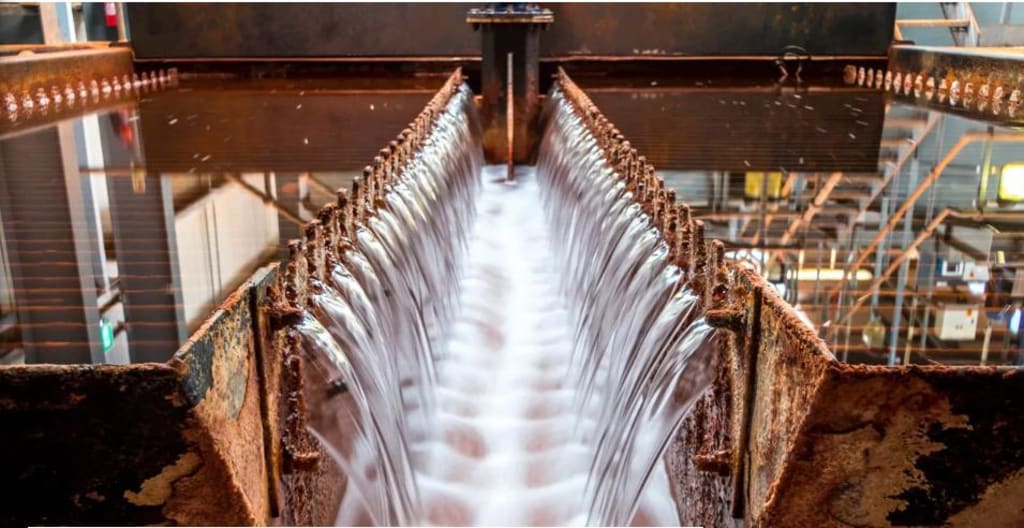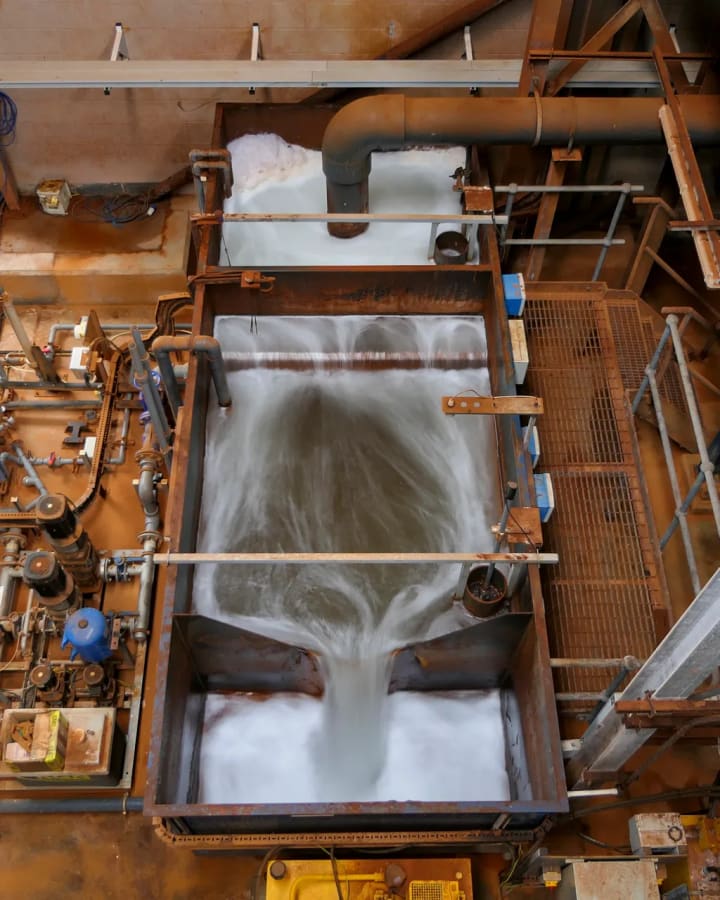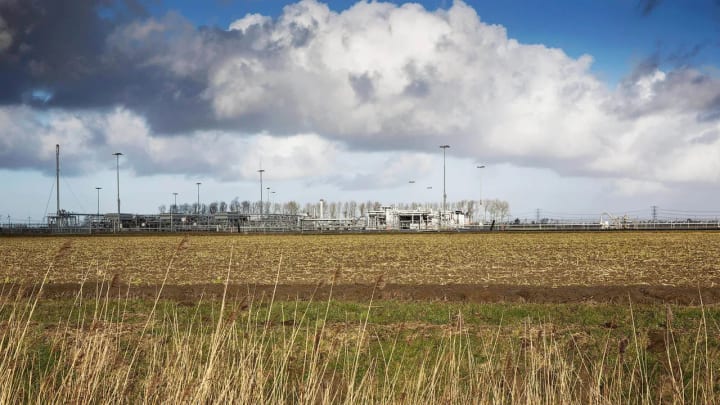
Coal mines were the beating heart of Britain's industrial revolution. Their sooty, energy-dense output gave life to new-fangled factories and shipyards, fuelling the nation's march towards modernity. They helped shape a carbon-intensive economy, one that took little notice of the natural world around it. The mines paved the way for a global dependence on fossil fuels, and in doing so, fired the starting pistol on the climate crisis that today confronts us all.
But what if, in a serendipitous circle of history, our extractive past could be repurposed for a greener, cleaner future? What if the vast maze of coal mines beneath our feet, now filled with naturally warm water, could help decarbonise the UK's – and the world's – herculean heating needs?
That's the question Adam Black, a renewable energy enthusiast employed by one of Britain's largest bottling firms, asked himself a decade ago.
"I had about 400,000 sq ft [37,000 sq m] of warehouse that needed heating," says the director of energy projects at Durham-based Lanchester Wines. "And it was right over four layers of mine workings, which had naturally flooded over time."

With the help of a few geothermal experts from Iceland, Black sunk a borehole into the murky depths of the old High Main coal seam in Gateshead, Tyne and Wear, England. Warmed by natural geological processes, the water they pumped to the surface was a pleasant 15C (59F).
With a little help from an electrical heat pump – "a bit like a fridge in reverse" – it was perfect for keeping the company's warehouse, and the millions of wine bottles within, at the right temperature. (Watch: how geothermal heat has been harnessed for centuries)
"Nowadays we're heating a couple of warehouses, a distribution depot, a local bakery, and soon a nearby car showroom too," says Black.
He's not the only one excited by the energy potential of mine water. The UK Coal Authority, which is responsible for the country's disused pits, has big plans for the coming decade. Its geologists believe one-quarter of British homes currently sit on a coalfield, stretching across Wales, central Scotland, northern England, and the Midlands. An estimated 2 billion cubic metres (2 trillion litres/4.4 billion gallons) of warm water occupy the old mine shafts – equivalent to more than a quarter of the volume of Loch Ness in Scotland. Researchers suggest that this makes mine water one of the UK's largest underused clean energy sources.
"Mining shaped our urban landscape, creating the towns and cities that we live in today," says Charlotte Adams, the Coal Authority's principle manager for mine energy. "Nine out of 10 of our largest urban centres are above areas of former coal mining activity.
"Mine water is one of our best options to help with the decarbonisation of heating. The resource is readily available all year round at a steady temperature, and there is an abundance to be accessed."

The UK has committed itself to net-zero greenhouse gas emissions by 2050, with much focus on the nation's heating needs (which account for around half of total energy usage). Natural gas remains the primary source for Britain's heat – some 70%, Adams says – though the government has pledged to phase out gas boilers in new-build homes from 2025.
While almost half of Britain's electricity supply has been decarbonised, swapping residential heating to electric would require a huge ramping up of renewable-energy generation, and put monumental pressure on the grid.
To help meet the country's sweeping carbon-reduction target, the Coal Authority is exploring the feasibility of some 70 mine water heating projects across the UK. It is estimated that around a quarter of the UK's population live above abandoned coal mines and that flooded shafts contain around 2.2 million GWh of heat, with the potential to store more.
One of the most ambitious water heating projects being developed by the UK Coal Authority is at Seaham, a seaside town in County Durham, home to the old Dawdon colliery. An existing treatment facility pumps up millions of litres of mine water every year for ecological reasons. Mine water often contains toxic compounds, as a result of chemical reactions with the subterranean rock. At the surface, the warmth from this water is now to be used to heat buildings above ground. Once its heat has been absorbed, the water is then returned to the mine workings where it will be warmed up again.
The water is hot enough to heat homes in winter, and cool enough to keep them mild when temperatures rise, with just 25% the carbon emissions of gas.
"It'll be cheaper than gas, too, by around 10%," Adams says, "and we believe it will help bring new investment and jobs to the area."
The north-east of England has some of the country's lowest levels of economic activity, a legacy of pit closures in the 1980s and 1990s that fractured coal-mining communities, leaving them with high unemployment and few opportunities.

A few hundred miles away across the North Sea, hopes of economic resurgence were central to what is seen as the world's most advanced mine water energy scheme – Heerlen in the Netherlands.
Located in the country's south-east, Heerlen was the crucible of Dutch coal mining before the mass closure of collieries a half-century ago. In 2008, geothermal experts revived the mines, striving to deliver low-impact heating and cooling for hundreds of local homes and businesses.
Today, Mijnwater BV, the scheme's operator, has connected 500 houses and commercial facilities, serving over 250,000 sq m (2.7 million sq ft) of building space to the town's district heating network. The system distributes locally generated heat to a nearby community, in a similar way to the one planned at Seaham, reducing the area's carbon emissions from heating by almost two-thirds. Mijnwater is working to further decarbonise its operation, with plans for solar and wind resources to power the electrical heat pumps that supplement the minewater's temperature.
"We have a closed-loop set-up," says Herman Eijdems, Mijnwater's director of innovation. "This means we pipe excess and waste energy back into the underground water to act as a heat store for when demand is high."
"There is a data centre that ejects around 45C, enough to supply a nearby school, and a supermarket whose cooling provides enough heat for three hundred dwellings."
This local focus offers Heerlen a high level of energy self-sufficiency – which could be useful given that the Netherlands' is set to close its main source of domestic gas production by 2022.

Though ahead of the game in Europe, Heerlen wasn't the first to leverage this sort of technology. In 1989, a packaging firm in Springhill, Nova Scotia, began attempts to draw heat from a network of nearby coal mines that had lain dormant for decades. The company, now owned by Mauser Packaging Solutions, has been refining the process ever since, and now boasts a circular climate control system that is 100% renewable 12 months of the year.
"In the wintertime, we take the hot water and use it as a heating source, and in the summertime, we have them all in air-conditioning mode," says plant manager David MacDonald, who was there when the first borehole went down more than 30 years ago.
Proud of their town's pioneering approach to mine water heating, dozens of small Springhill businesses have since hooked up their own geothermal power supplies, with local officials eager to entice new investment with the promise of plentiful green energy.
In the mountainous Asturias region of northern Spain, there's a similar story to be told. After years of decline, the area's last remaining pit shut in 2018, cutting deep into a local community reliant on coal for generations. With the advent of mine water heating technology, there's hope for an industrial rebirth.
"Geothermal energy has given a second life to our coal mines," says María Belarmina Díaz Aguado, the Asturias's director of energy. "We're developing an entirely new business model, one related to pumping water and all the technical expertise that involves."
In addition to hundreds of residential properties, the region's flooded mines provide heat for a hospital, a university, a secondary school, and a number of other public and private buildings. Hunosa, the company in charge of the scheme, guarantees energy prices lower than fossil fuel alternatives, and uses only sustainably generated electricity in its pumping process. In doing so, several thousand tonnes of carbon emissions are avoided each year, Díaz Aguado says.

Yet, while there's mounting evidence of mine water's energy potential, the idea isn't without issue. Retrofitting houses with the means to tap into a geothermal district heating network isn't cheap, and new builds aren't often sited next to derelict collieries. And then there are the technical hurdles.
"There are some pre-existing treatment plants pumping water up already, as is the case at Seaham," says Corinna Abesser, hydrogeologist and groundwater modeller at the British Geological Survey. "But the real opportunity with mine geothermal lies in drilling new boreholes into the mines wherever the heat is needed.
"This comes with some technical challenges, for example stability concerns around abandoned mine shafts, which were simply left to collapse."
Perhaps the greatest hurdle, however, is that which motivated the opening of the mines in the first place: money. The capital costs are much higher with mine water geothermal, though under the right conditions the energy generated can be cheaper than that from conventional sources.
Adam Black at Lanchester Wines hopes that the costs will fall as the technology develops and uptake increases, "and if the energy authorities do their bit with regulation".
Beyond doubt is that the resource is there and waiting: A labyrinth of warrens once laden with men and machinery, now flooded with naturally warm water, ready to be tapped.






Comments
There are no comments for this story
Be the first to respond and start the conversation.